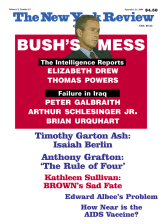To the Editors:
Time and again we are told on TV, newsprint, and a plethora of alarmist books that man-caused global warming will plunge our lovely planet Earth into wild storms, drought, hurricanes, disease pandemics, and coastal flooding from rising seas.
We occasionally see a short newsclip saying maybe it isn’t true. But each time a doubting voice is raised, he or she will be attacked as surely as cats scramble after mice. Sixteen years ago, a young Ph.D. from Iowa named James Hansen alarmed news writers at a Washington hearing during a heat wave; the global warming saga then blossomed to assume the undeserved status of dogma.
It’s all very sad. It’s sad because climate science has been steadily corrupted, and at times, ugly remarks and innuendo have beset fine scientists willing to stand up to the cadre of believers. Don’t get me wrong—the Earth’s climate is terribly important to all who live here. But it is equally important to avoid making policy based largely upon demonstrably crude electronic computer models of our complex atmosphere.
“Crossing the Red Line” by writer Bill McKibben [NYR, June 10, 2004] sheds no light upon the matter. Not one of the many books he reviews reveals any skepticism of man-caused global warming. Thus he ignores Hot Talk, Cold Science, by S. Fred Singer (Independent Institute, 1997), Sound and Fury: The Science and Politics of Global Warming, by Patrick J. Michaels (Cato Institute, 1992), Scientific Perspectives on the Greenhouse Problem, by Robert Jastrow, William Nierenberg, and Frederick Seitz (Jameson Books, 1990), and Carbon Dioxide and Global Change: Earth in Transition, by Sherwood B. Idso (IBR Press, 1989), where all these authors are highly experienced atmospheric scientists. In ad-dition, McKibben ignores the evenhanded chapter in the more modern work The Skeptical Environmentalist, by Bjo/rn Lomborg (Cambridge University Press, 2001).
Finally, I have reservations about Mc-Kibben’s title, “Crossing the Red Line,” which implies that adding a dribble more of carbon dioxide beyond his “Red Line” will unalterably mess up planet Earth. No qualified atmospheric scientist I know of would buy such a thought.
Kent G. Dedrick, Ph.D.
Sacramento, California
Bill McKibben replies:
Dr. Dedrick’s letter is a useful opportunity to reflect again on the history of climate science. He is right to credit James Hansen, a senior researcher at NASA’s Goddard Institute for Space Studies, with helping to get the public debate over global warming going with his 1988 testimony before the Senate. Science, in the years that followed, employed its powerful dialectic method to get at the actual truth—any number of theorists attacked the greenhouse hypothesis from a wide variety of directions. (Most of the books that Dr. Dedrick cites come from that period.) By 1995, the world’s clima-tologists, gathered together by the UN in the Intergovernmental Panel on Climate Change (IPCC) and charged with synthesizing all peer-reviewed literature on the subject, declared that “the balance of evidence suggests a discernible human influence on global climate.” They declared, in other words, that Hansen and others had been right to warn about the effects of CO2 on climate stability.
The IPCC, which includes virtually every climate scientist on the planet, continues its work. Its most recent update, published after extensive debate over wording, came in the winter of 2001 when it decided that all the recent data supported a much stronger conclusion: “There is new and stronger evidence that most of the warming observed over the last 50 years is attributable to human activities.” Dr. Dedrick maintains that pursuit of this dialectic method has corrupted climate science; in my view, the IPCC will eventually be viewed as a great accomplishment in the history of science, mobilizing expert assessment and technique to cope with a problem of enormous dimension and complexity. To the extent that the authors cited by Dr. Dedrick have produced new peer-reviewed research, their work has been factored into the IPCC conclusions. In any event, readers can judge the probity of the IPCC process for themselves—all the volumes of their work, and the technical papers supporting them, can be found online at www.ipcc.ch.
As to the headline on the piece, “Crossing the Red Line,” Dr. Dedrick complains that it implies an absolute cutoff point, whereby 550 parts per million of CO2 would be trivial and 560 ppm devastating. He is right that this is not the case—each increment of additional carbon in the atmosphere adds to our risk. There is no longer any avoiding serious consequences of global warming; indeed, as my article pointed out, we already see such consequences. Our lifetimes will be spent in the uncertain neighborhood of this red line between mere degradation and outright catastrophe; in such risky neighborhoods it is best to err on the side of caution.
This Issue
September 23, 2004



